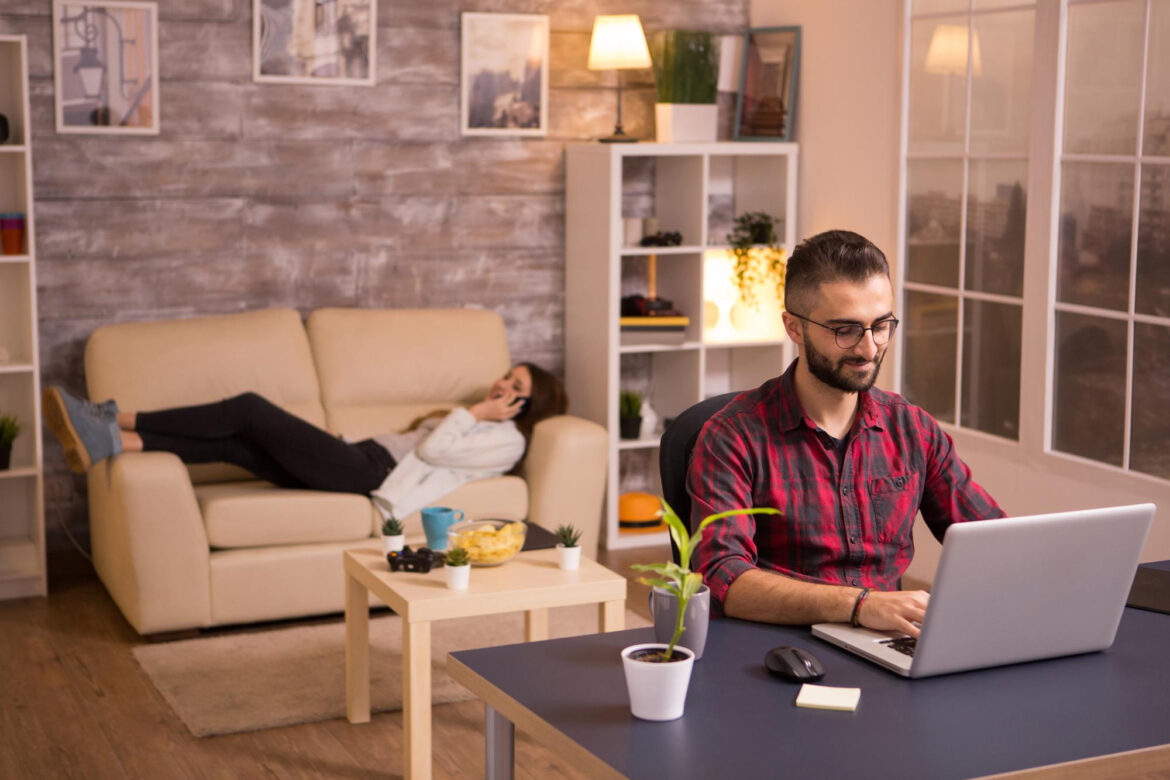More people are working from home today than ever before. Whether you’re a remote employee, freelancer, or someone who just needs a quiet place to focus, having a well-designed home office can make all the difference. But where do you start? Choosing the right layout for your home office can boost productivity, reduce stress, and help you stay organized.
In this article, we’ll go through the top 5 home office layouts designed to improve your productivity. From minimalist designs to cozy, distraction-free setups, there’s a layout here for every need. Let’s get started!
Table of Contents
Toggle5 Best Home Office Layouts for Productivity
Following are the 05 ideas for creating the ideal space for productivity at home:
1. Minimalist Workspace Layout
Why Choose a Minimalist Layout?
A minimalist workspace is simple, clean, and free of clutter. This layout can help you stay focused because it minimizes distractions. Many people find that a minimalist environment improves mental clarity, which can lead to better productivity.
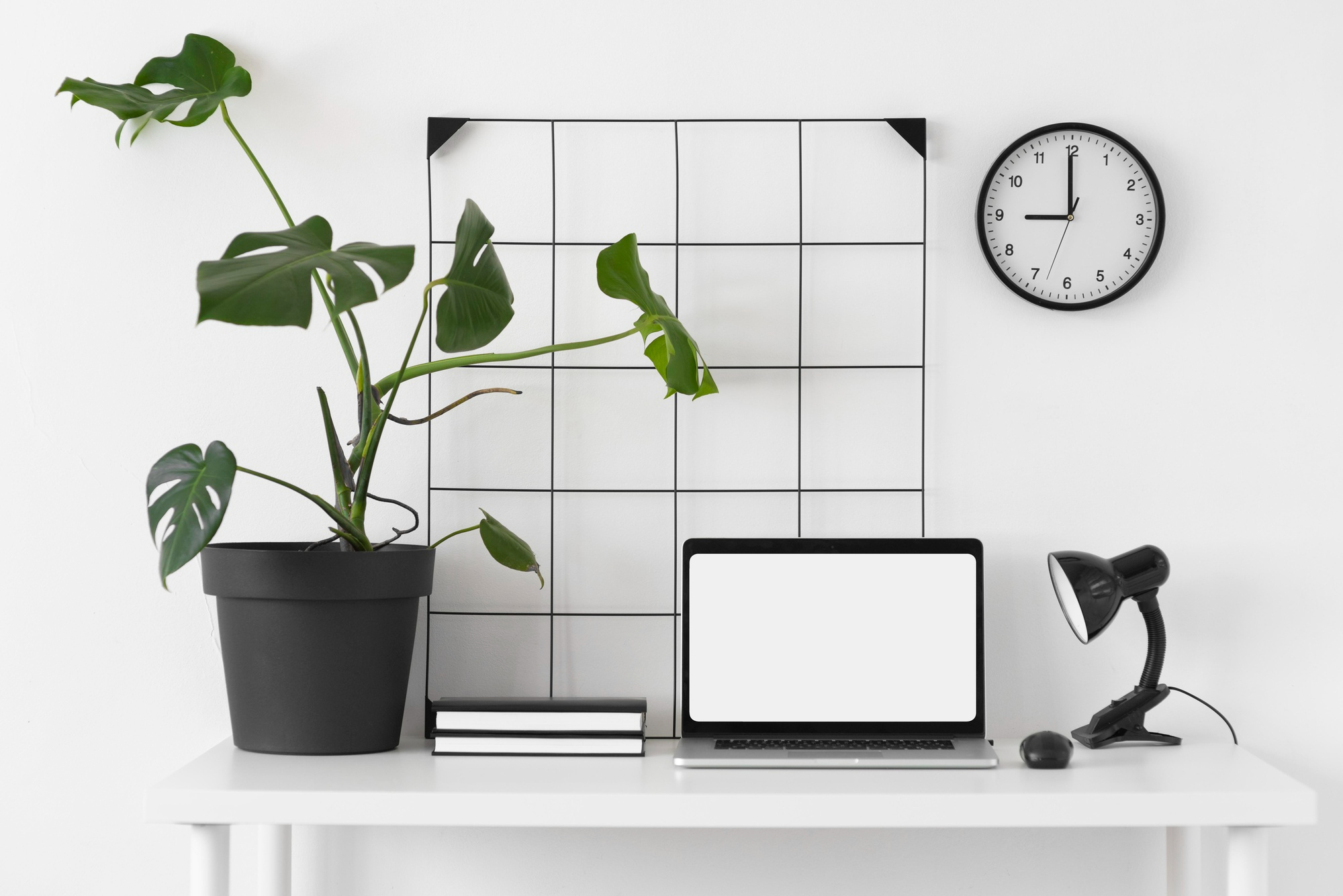
How to Set Up a Minimalist Workspace
- Choose a Neutral Desk – Opt for a simple desk without too many drawers. Here’s a great selection of minimalist desks on Ikea.
- Reduce Clutter – Keep only the essentials on your desk. Consider using cable organizers to keep everything neat.
- Add Simple Decor – If you enjoy a bit of decor, add one or two items like a small plant or a minimal clock.
Benefits of a Minimalist Layout
- Less Clutter, More Focus – When there’s less to look at, you’re less likely to get distracted.
- Easy to Clean and Maintain – Fewer items mean less dust and easier cleaning.
Also Read: 15 DIY Shelf Ideas: Creative and Easy Shelving Solutions for Your Home
Helpful Links for Minimalist Office Essentials
2. Cozy Nook Layout
Why Choose a Cozy Nook?
If you prefer a warm, inviting space, the cozy nook layout is perfect. This setup works best in small spaces or unused corners of a room, making it ideal for people with limited space but big dreams of a productive workspace.
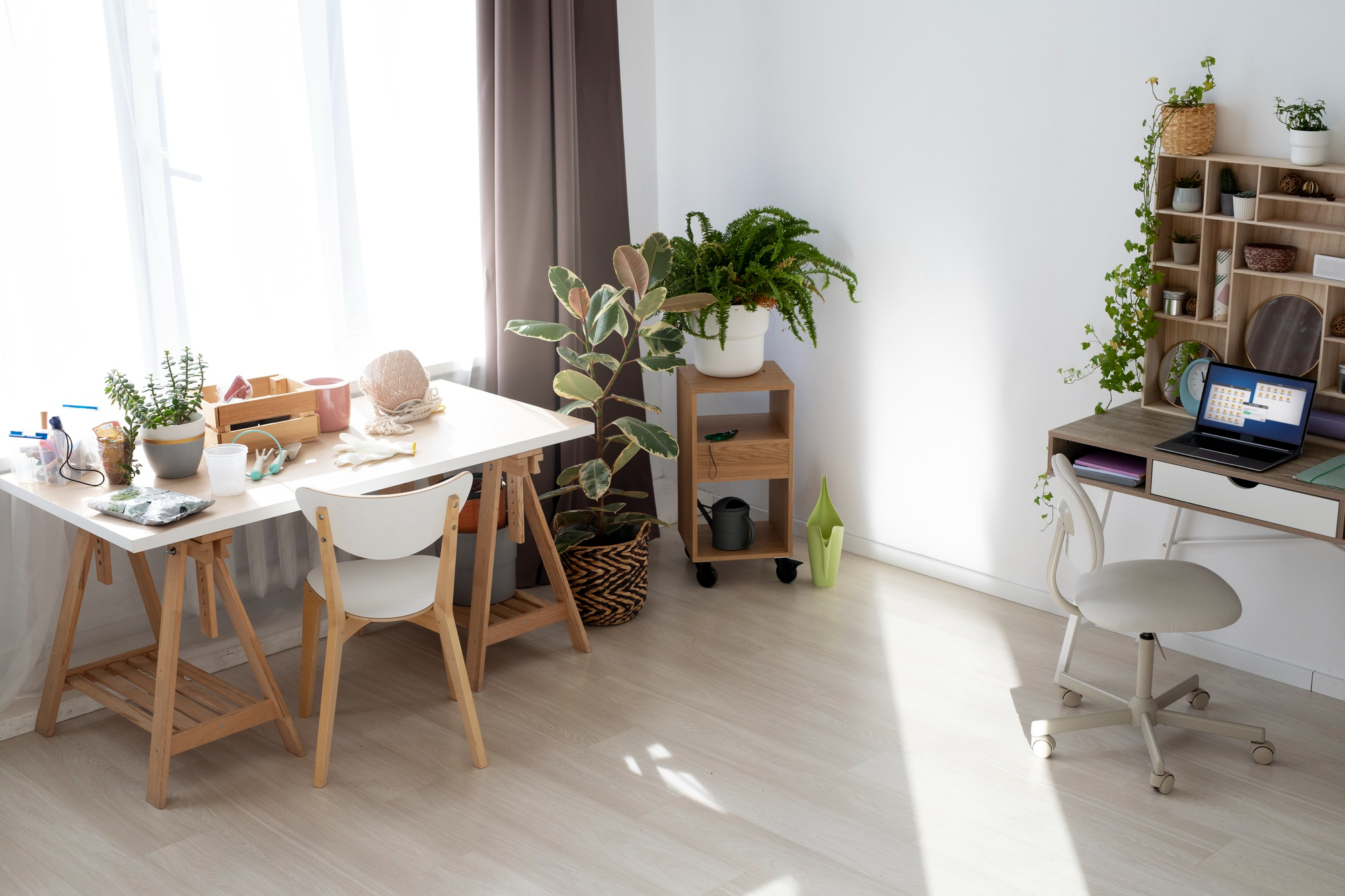
Setting Up Your Cozy Nook
- Find the Right Spot – Choose a corner or a small area where you can place a small desk and chair.
- Use Warm Lighting – A small lamp or soft lighting can make a big difference. Here are some great lighting options.
- Add Comfortable Elements – Use a cozy chair, throw blanket, or even a small rug for added warmth.
Benefits of a Cozy Nook Layout
- Feels Relaxing – A cozy setup can help you feel more comfortable and reduce work-related stress.
- Saves Space – This layout is ideal for small rooms or apartments.
Links for Setting Up a Cozy Nook
3. Standing Desk Layout
Why Choose a Standing Desk?
A standing desk layout promotes movement throughout the day. Standing desks are known to boost energy and reduce the risk of health issues associated with sitting for long hours. They also help keep you alert and focused.
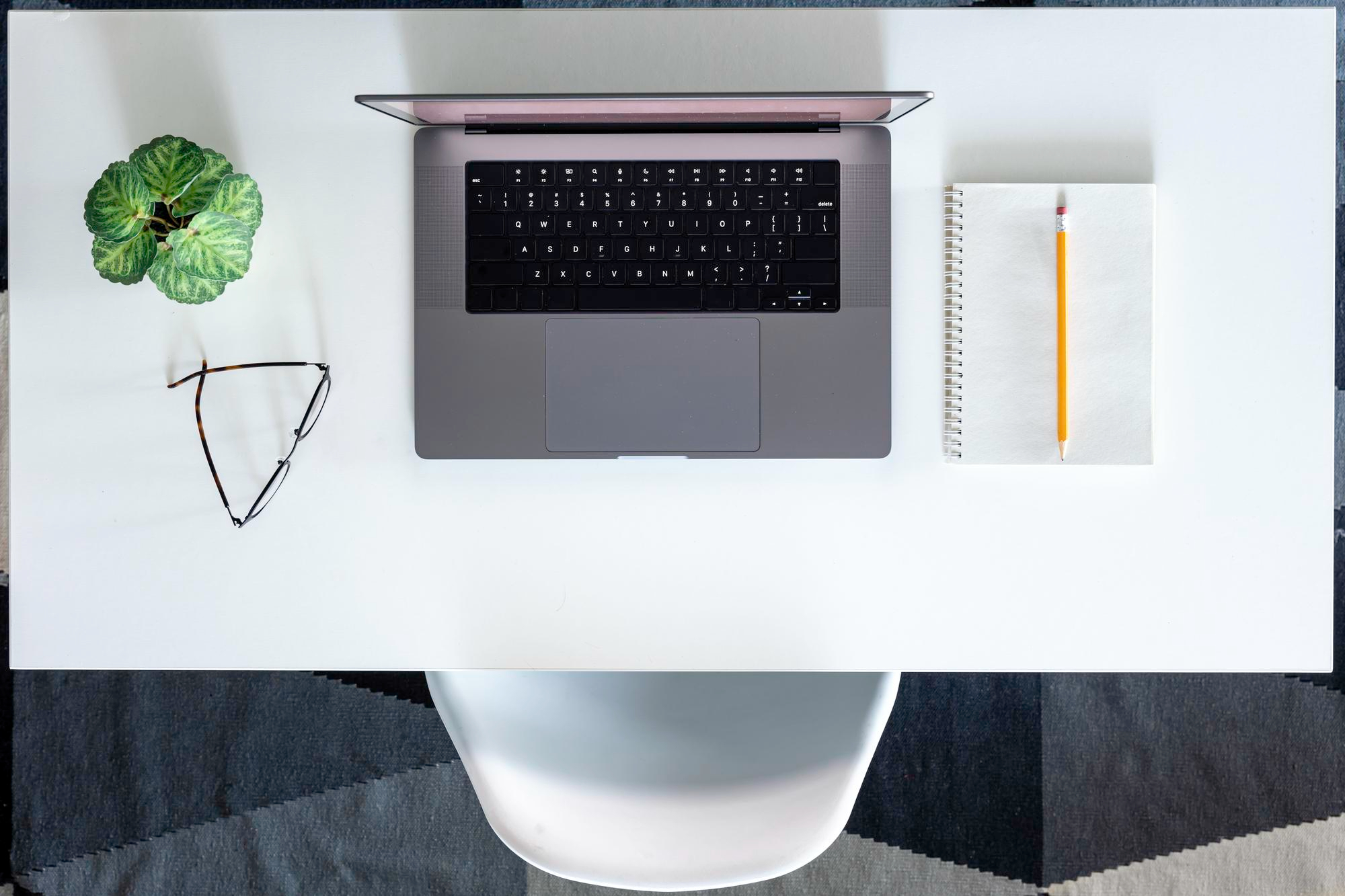
Tips for Setting Up a Standing Desk Layout
- Choose an Adjustable Desk – An adjustable desk lets you switch between sitting and standing. Check out these top-rated standing desks.
- Add a Comfortable Floor Mat – Standing all day can be tiring; a floor mat helps ease pressure on your feet.
- Organize Your Space Efficiently – Place your most-used items at arm’s reach to avoid unnecessary movements.
Benefits of a Standing Desk Layout
- Boosts Health and Energy – Standing helps prevent back pain and keeps your blood circulating.
- Improves Focus – Many people feel more alert and engaged when standing.
Also Read: Adding Storage to a Small Kids Bedroom: A Complete Guide
Links for Standing Desk Accessories
4. Dual Desk Layout for Shared Spaces
Why Choose a Dual Desk Layout?
For those sharing an office with a partner or family member, a dual desk layout allows two people to work productively in the same space. This setup is great for collaborative work and maintaining separate work zones within the same room.
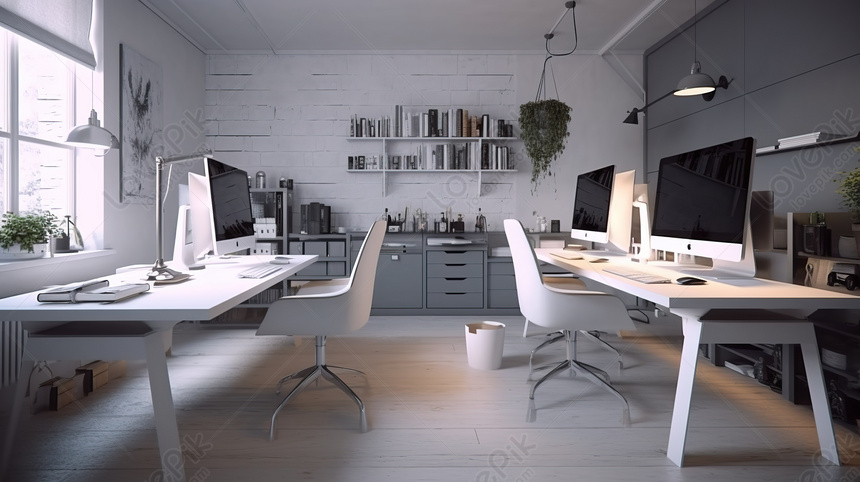
How to Set Up a Dual Desk Layout
- Choose Two Desks or a Long Desk – You can place two desks side by side or use a long table that gives both users enough space. Check out shared desks and tables for ideas.
- Add Separate Storage – Ensure each person has their storage or filing system to stay organized.
- Create Visual Boundaries – If you need a bit of separation, consider a room divider or shelving unit.
Benefits of a Dual Desk Layout
- Promotes Collaboration – Great for partners or family members working together.
- Saves Space – Allows two people to work in a single room without sacrificing productivity.
Links for Setting Up a Dual Desk Layout
5. Creative Studio Layout
Why Choose a Creative Studio Layout?
Ideal for artists, designers, and content creators, the creative studio layout provides space for both work and creative projects. This layout typically includes multiple workstations and is perfect for hands-on work.
Setting Up Your Creative Studio
- Use a Large Table or Desk – Artists often need more space for materials, so a large desk is essential. Shop large work tables here.
- Add Storage for Supplies – Use shelves, drawers, or bins for organizing tools and materials.
- Include a Comfortable Seating Area – A couch or lounge chair can offer a break from intense creative work.
Benefits of a Creative Studio Layout
- Ample Space for Projects – Large work surfaces help you spread out and focus on your creative process.
- Organized Storage – Keeps materials tidy and easily accessible, which improves workflow.
Links for Creative Workspace Essentials
Additional Tips for All Layouts
Lighting Matters – Good lighting is essential for productivity and can reduce eye strain. Look for LED desk lamps or add natural light where possible.
Ergonomics – Investing in ergonomic furniture can prevent strain and fatigue. Check out ergonomic chairs designed for office use.
Noise Control – If you’re easily distracted, consider noise-canceling headphones or add a white noise machine to your workspace.
Keep Things Organized – A tidy workspace makes it easier to focus and boosts productivity. You can find great organization ideas at The Container Store.
Conclusion
A productive home office isn’t just about looks; it’s about creating a space that supports your goals and helps you focus. Whether you prefer a minimalist workspace, a cozy nook, or a high-energy standing desk setup, there’s a home office layout to match your needs. Try out these layouts, add your personal touches, and enjoy a workspace that helps you stay motivated and productive every day.
Suggested Resources
- Furniture: Ikea
- Office Supplies: Staples
- Organization Solutions: The Container Store
FAQ: 5 Best Home Office Layouts for Productivity
1. What should I consider first when setting up a home office layout?
Start by considering the space available and the type of work you do. Are you a designer who needs extra space for equipment? Or do you work in a job that requires mainly a desk and computer? Understanding your needs will guide your choice of layout. Also, factor in lighting, ergonomics, and any potential distractions in the space. Try to choose a quiet, dedicated area in your home where you can focus without interruptions.
2. Which home office layout is best for small spaces?
For small spaces, a Cozy Nook Layout or Minimalist Workspace works best. These layouts take up minimal space and help you make the most of a small area by prioritizing essentials. Using vertical storage, wall-mounted shelves, and a compact desk can save floor space. Also, consider multi-functional furniture, like desks with built-in storage, which can optimize small spaces further without sacrificing functionality.
3. How can I make my home office more ergonomic?
Invest in an ergonomic chair with adjustable features to support your back, neck, and arms. Position your monitor at eye level to avoid neck strain, and consider using a standing desk or a desk converter if you want the option to stand. Additionally, make sure to keep your desk at elbow height to reduce wrist strain, and use accessories like a keyboard wrist rest or a footrest if necessary. Regularly adjust your setup based on your comfort to avoid fatigue.
4. What are some effective ways to reduce distractions in a home office?
Reducing distractions can significantly boost productivity. Start by choosing a quiet location away from high-traffic areas in your home. Use noise-canceling headphones to block out background noise, or play white noise to mask other sounds. A room divider can help visually separate your workspace from the rest of your living space. Keep your desk clear of non-essential items, and consider using apps like Focus@Will for concentration-boosting background music.
5. How can I make a shared home office space work for two people?
A Dual Desk Layout is ideal for shared spaces. Ensure both individuals have a designated workspace, either with two separate desks or one large desk that accommodates both. Use visual boundaries like a bookshelf or room divider if you need additional privacy. Consider storage solutions that allow each person to keep their essentials separate, and establish work routines to avoid conflicts. If possible, add noise-canceling headphones to reduce audio distractions from one another.
6. Are there specific colors that enhance productivity in a home office?
Yes, colors can impact mood and productivity. Blue is often considered a “productive” color, known to improve focus and promote calmness. Green is also a popular choice because it reduces eye strain and brings a sense of balance. If your work requires creativity, try adding touches of yellow, which can enhance optimism and inspiration. Keep the primary color scheme neutral and add accents for a balanced effect. Avoid overly bright colors that might be distracting or tiring.
7. How can lighting impact my productivity in a home office?
Lighting plays a huge role in productivity and comfort. Natural light is the best option as it reduces eye strain and boosts mood. Position your desk near a window if possible. If natural light isn’t available, choose LED lights that simulate daylight. Avoid harsh overhead lighting; instead, opt for desk lamps with adjustable brightness. Layering your lighting—such as using both ambient and task lighting—allows you to control the environment based on the time of day or task at hand.
8. How can I keep my home office organized to maintain productivity?
Keeping your workspace organized is crucial for focus and efficiency. Use drawers, bins, or shelving units to store paperwork and supplies, keeping your desk clear. For digital organization, tools like Trello, Google Workspace, or Notion can help manage tasks and documents. Develop a routine of decluttering your desk daily, and use cable organizers to keep cords tidy. If possible, reserve specific areas for different tasks, like a drawer for paperwork or a shelf for books and references.
9. Can I set up a productive home office without spending a lot of money?
Yes, a productive home office doesn’t have to be expensive. Start with a sturdy desk and chair, even if it’s second-hand or a DIY option. Use household items like jars for pens or trays for paper organization. You can also get creative with wall-mounted storage to save space inexpensively. Free digital tools like Trello and Notion are perfect for task management. Over time, invest in items that will genuinely improve your comfort and productivity, like an ergonomic chair or better lighting.
10. What’s the best way to incorporate personal touches without cluttering my home office?
Adding personal touches can make your workspace more inviting and keep you motivated. Choose a few meaningful items, such as a small plant, a framed photo, or inspiring artwork. Limit yourself to two or three decor items to avoid clutter. Plants, in particular, can improve air quality and reduce stress. You can also personalize your digital workspace with customized wallpapers or inspirational quotes. Keeping personal items minimal helps you maintain a professional and clutter-free environment while adding a bit of personality.
